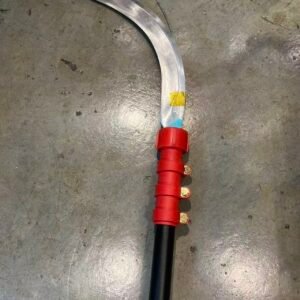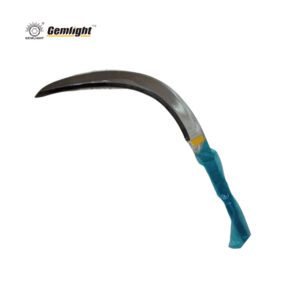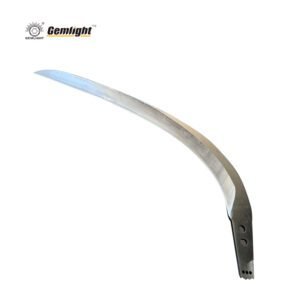When searching for a scythe for sale, buyers often face a wide range of options, from traditional hand-forged blades to modern mass-produced agricultural tools. For wholesalers, distributors, and agricultural companies, the scythe remains one of the most reliable tools for grass cutting, harvesting, and weed control. While mechanized farming is advancing, hand tools like scythes are still in high demand across Africa, South America, and Southeast Asia—markets where cost-effectiveness, durability, and simplicity are essential.
This article provides a comprehensive guide to scythes, including their history, design variations, applications, buying considerations, and why sourcing directly from manufacturers ensures better profit margins. If you are evaluating suppliers and comparing scythes for sale, this guide will help you make well-informed purchasing decisions.
The History and Significance of the Scythe
From Ancient Fields to Modern Agriculture
The scythe has existed for centuries, first appearing in Europe around the 9th century. Farmers used it for cutting hay, harvesting crops, and clearing land. Its iconic long curved blade attached to a wooden or steel handle allowed workers to cut efficiently with a swinging motion.
Why the Scythe Remains Relevant
Despite tractors and motorized harvesters, scythes remain essential for small-scale farmers and rural communities. They require no fuel, are cost-effective, and can be used on uneven or mountainous terrain where machines cannot operate. This makes the scythe for sale market very much alive, especially in developing agricultural economies.
Understanding the Design of a Scythe
Blade Materials
High-Carbon Steel: Offers hardness, durability, and easy sharpening.
Tempered Steel: Provides flexibility while resisting bending or breakage.
Railway Steel: Often recycled for tool blades, combining affordability with strength.
Handle Construction
Wooden Handles: Traditional, comfortable, and eco-friendly.
Steel Handles: Durable and suited for heavy-duty use.
Composite Handles: Lightweight options designed for modern tools.
Blade Shapes
Straight Scythes: Best for cutting hay and grass.
Curved Scythes: Ideal for harvesting grain and dense crops.
Serrated Scythes: Useful for tougher weeds and sugarcane harvesting.
Applications of Scythes in Modern Farming
Grass and Weed Cutting
Farmers still use scythes to maintain grasslands, clear weeds, and prepare fields. Unlike motorized tools, they do not rely on fuel, making them cost-efficient.
Harvesting Crops
Scythes are widely used in harvesting sugarcane, rice, and wheat in developing markets. Their long blades enable quick manual cutting of large sections of crop.
Sustainable Agriculture
For organic farming and eco-conscious communities, scythes represent a non-polluting alternative to machines. Distributors who market eco-friendly tools often find steady demand for traditional scythes.
Key Factors When Buying a Scythe for Sale
1. Material Quality
Durability is essential. Distributors should look for scythes made from heat-treated or tempered steel to ensure blades stay sharp longer.
2. Handle Design
Comfortable grips reduce fatigue. Buyers should consider whether wood or plastic handles suit their customers’ markets better.
3. Blade Size and Shape
Different regions require specific scythe designs. Latin America prefers curved sugarcane blades, while Africa often requires multipurpose sickles and scythes for varied crops.
4. Supplier Reputation
Wholesalers must verify manufacturer quality, certifications, and production capacity. Many distributors face problems with inconsistent quality when dealing with unreliable suppliers.
Global Demand for Scythes
The demand for scythes for sale is highest in regions where mechanized agriculture is less accessible.
Africa: Used widely in sugarcane, rice, and maize harvesting.
South America: Still popular for smallholder farming and rural distribution networks.
Southeast Asia: Farmers prefer durable hand tools for rice paddies and small farms.
For distributors, these markets present lucrative opportunities. Purchasing directly from a factory in China ensures cost advantages while maintaining consistent quality.
Why Source Directly from Manufacturers?
Cost Advantage
Factories in China, such as those in Hebei Province, specialize in forging scythes and agricultural tools. By purchasing directly, distributors eliminate middlemen and achieve better margins.
Customization Options
OEM and ODM services allow buyers to add branding, logos, and packaging tailored to local markets. A personalized brand builds customer loyalty.
Large-Scale Production
With multiple production lines, manufacturers can handle bulk orders efficiently, ensuring timely delivery for seasonal demands.
Comparing Scythe Suppliers
When searching for a scythe for sale, buyers should evaluate suppliers based on:
Steel Source: Whether they use railway steel, high-carbon steel, or imported alloys.
Production Capacity: Ability to meet bulk orders consistently.
Certifications: International quality standards ensure reliability.
After-Sales Service: Replacement policies and customer support matter for distributors.
Scythe vs. Modern Alternatives
Many new buyers ask whether scythes can compete with brush cutters, lawn mowers, or electric harvesters. The answer lies in market fit. For smallholder farmers and distributors serving rural areas, scythes remain irreplaceable. Unlike machines, they require no spare parts, no repairs, and no fuel—making them an affordable choice for low-income farmers.
Marketing Opportunities for Distributors
Wholesalers who bring scythes for sale into developing markets benefit from steady demand. Strategies include:
Partnering with local dealers to penetrate village markets.
Offering bundled agricultural tools (hoes, sickles, machetes) alongside scythes.
Highlighting scythes as eco-friendly and cost-efficient compared to fuel-powered machines.
Case Study: African Market
In Ghana, Kenya, and Nigeria, distributors report strong sales of hand tools like scythes. Farmers prefer durable, polished blades that last through multiple seasons. Suppliers who provide certificates of quality and reliable logistics gain the trust of local markets, avoiding fraud issues common with small suppliers.
How to Ensure Profitability When Buying Scythes for Sale
Plan Ahead: Order before peak harvest seasons to avoid shipping delays.
Negotiate MOQ (Minimum Order Quantity): Ensure the order size aligns with storage and sales cycles.
Inspect Samples: Always check a supplier’s product samples before bulk purchasing.
Choose Flexible Payment Terms: Secure suppliers that offer safe, traceable transactions.
Future Outlook of the Scythe Market
While mechanization continues to grow, the scythe for sale market will remain stable in rural economies. With rising global demand for organic farming and eco-friendly tools, scythes may even gain popularity in developed regions for hobby farming, landscaping, and sustainable agriculture.
Conclusion
Searching for the right scythe for sale requires more than comparing prices. Wholesalers and distributors must evaluate blade quality, handle design, supplier reliability, and market needs. Direct sourcing from established factories ensures better pricing, branding opportunities, and timely delivery.
For distributors targeting Africa, South America, and Southeast Asia, the scythe remains a timeless agricultural tool—one that guarantees steady demand, healthy profit margins, and long-term customer trust.








